In the mid-1970s, George Lucas was in his office at Univeral Studios in Hollywood thinking about the idea of creating an epic blockbuster set in space. Inspired by watching Flash Gordon in his youth, as well as his reading of comic books, Lucas imagined creating a film that would transcend the ages. Much to his dismay, his actual making of this visionary film Star Wars would change the film industry and the cinema forever.
George Lucas was born in Modesto, California in 1944. At a young age, Lucas had a passion for science fiction and comic books, but he also had dreams of becoming a race car driver. A few days before his graduation, Lucas got in a car accident when he was driving home when another driver collided with him, causing him to flip out of the car and lose consciousness. He suffered many injuries such as broken bones and bleeding lungs. After the accident, Lucas decided that racing wasn’t for him, leading him to go down a different path. He had originally thought about being a painter, but that didn’t feel right to him until a racing fan recommended that he go to film school. Embarking on a new journey, Lucas embraced a new passion for storytelling, enrolling at USC and setting the stage for his career in film.1
Following his graduation from USC in 1972, Lucas quickly made connections in the industry with figures like Francis Ford Copolla. With a scholarship from Warner Bros, he went to San Francisco to film his debut film, American Grafitti. Released in 1973, the film was loosely inspired by his final days in high school. The film captivated audiences and became an instant classic, earning over $140 million at the box office. The release cemented Lucas as a formidable force in the film landscape.
During the production of American Graffiti, Lucas began thinking about creating a science fiction movie with elements of fantasy, which he referred to as a “space opera.” Inspired by his childhood favorite hero, Flash Gordon, Lucas attempted to secure the rights to adapt it, but found it unavailable. Nonetheless, with one film completed and needing funding for his next project—his “space opera”—Lucas embarked on a quest to find a studio willing to support that project. Eventually, he secured backing from Universal Pictures, known for producing American Graffiti. Despite Universal’s skepticism about the “space opera,” Lucas remained committed to realizing his vision and continued to develop the world that would become Star Wars.
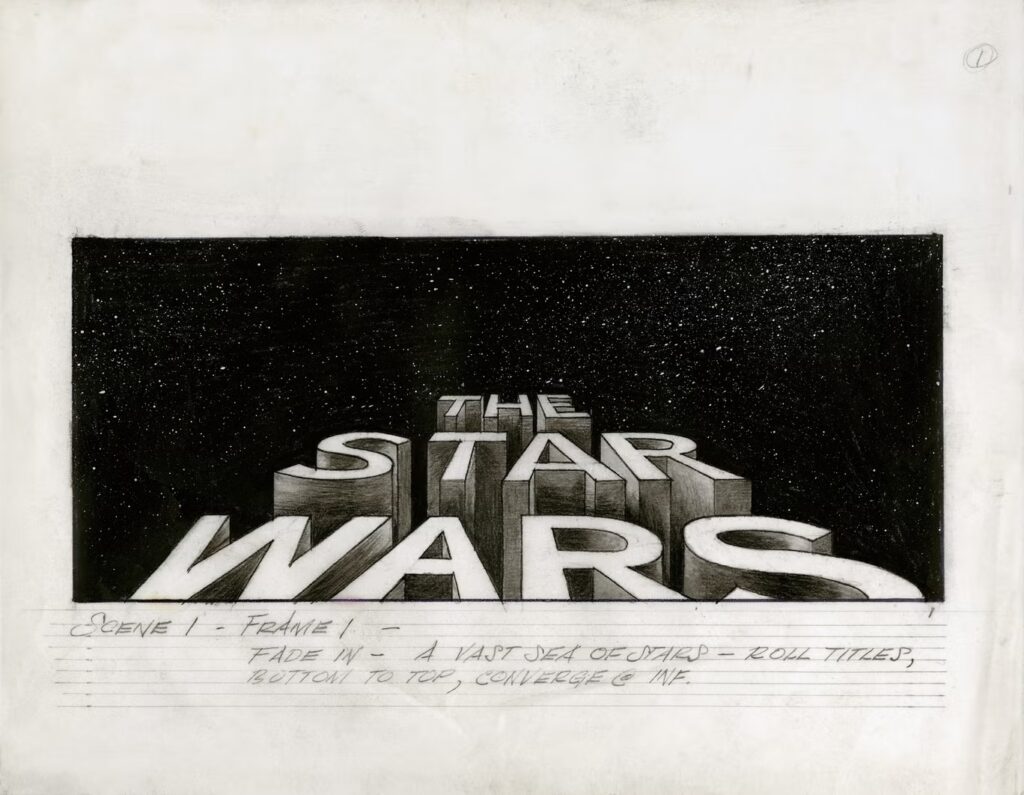
by Alex Tavoularis | Courtesy of TASCHEN
Despite having a clear vision, many studios didn’t see the potential of Lucas’s film. Major studios, such as United Artists and Universal, thought it could be successful, but due to the low popularity of the science fiction genre, they declined it. Even with his industry connections with Francis Ford Coppola, who brought the project to Paramount Pictures, Paramount was unsure of Lucas’s directing ability, so they declined it. Even Walt Disney declined, which is ironic, considering that they bought the entire Star Wars franchise in 2013. Eventually, Twentieth-Century Fox accepted Lucas’s project, but the president, Alan Ladd Jr, didn’t fund the film. 2
Still, he embarked on a creative process that took several years. Lucas developed well-crafted characters, places, and narratives for his movie concept. Starting in 1973, Lucas wrote a thirteen-page draft with a little inspiration from “The Hidden Fortress.” Lucas wanted his concept of the film to stand out and bring something new to the sci-fi genre. Instead of making a clean, sleek, and futuristic world, he wanted it to have a gritty, rough environment that felt lived-in. Lucas wanted the movie to stand out among the crowd, not just visually and creatively, but he also wanted to bring audiences back to a childlike wonder. Lucas continued to create concepts for the project throughout 1974. Some of these concepts were Han Solo who was imagined as a large green alien with gills, and Darth Vader was a General instead of a Sith Lord. In the 1975 draft of what was called “Adventures of Starkiller, Episode One Star Wars,” originally Luke Skywalker, who was named Luke Starkiller, had multiple brothers, and his father was a Jedi Knight, who eventually became Obi-Wan Kenobi.3
While many of these initial elements would still make it into the film, Lucas rejected most of them because they did not feel like the epic action-adventure blockbuster film he wanted to do. He repeatedly went back to the drawing board. Lucas kept some ideas, such as the Force and Jedi, while taking out ideas that would be later used for future prequels. Around this time, Fox finally decided to give Lucas the budget for the film, set at eight million dollars, due to the success of his first film. Lucas finally finished the screenplay in 1976. With the story and the basis of Star Wars set, it was time to move on to the most important part, casting!
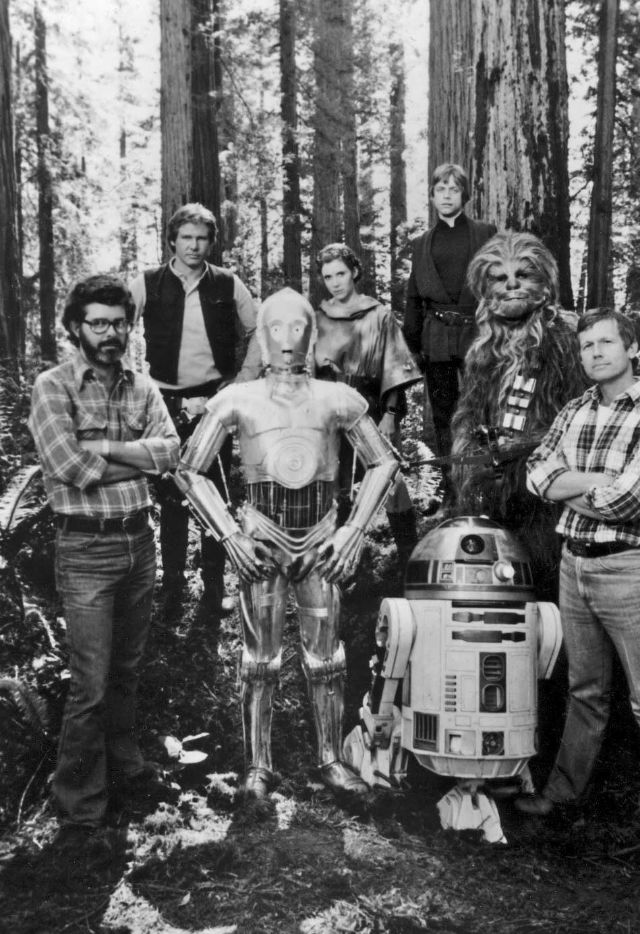
Rare Historical Photos
Casting is a major aspect of any filmmaking project. You need people who have great chemistry on and off the set, matching your vision and tone for the film. That is what Lucas set out to do. One of the actors that Lucas wanted to work with was Harrison Ford, who previously worked with Lucas on American Graffiti and played the character of Bob Falfa. Some of the actors who auditioned for the part of Luke Skywalker were Kurt Russell, William Katt, and Charles Martin Smith; but ultimately Mark Hamill won the part. Princess Leia’s casting, on the other hand, included many actresses, such as Cindy Willaims and Amy Irving, with Jodie Foster almost getting the part. Due to the scheduling conflicts, the role ultimatley went to Carrie Fisher. Many of the actors that were chosen were relatively unknown at the time, which was a choice by Lucas to prevent actors from overshadowing one another. Next, they went to the filming stage, where Star Wars displays its groundbreaking techniques, such as its special effects.4
Lucas and his crew had to be smart with how they used their money. Compared to other sci-fi films at the time, they didn’t have the budget to afford large-scale sets or the best special effects. For example, for the special effects of the vehicles that were created, like Luke’s land speeder, Lucas used techniques to give off an illusion that it was levitating. Originally, the land speeder looked like a crescent moon shape with an orange color, but they wanted something lower to the ground and smaller, so they went with the classic design that we are now all familiar with today. To give the illusion that it was floating, for most shots, they used a crane so that it would look like it was levitating. For some parts of shooting, they used a small car on the bottom of the model with a mirror placed on the side to hide the wheels below, making the desert a background for the camera.5
Lucas wanted this movie to stand out conceptually, but also visually. Other futuristic films at the time were sleek and clean, but Lucas was intent on creating a gritter atmosphere. A lot of what made Star Wars stand out at the time was how the environment was very much lived in and how immersive you felt in this world. Whether it was the buildings in Tatootine or Luke’s land speeder, Lucas wanted the audience to have the feeling of being real and lived in. While the film didn’t have the budget that most films had at the time, they found a unique solution: matte paintings.
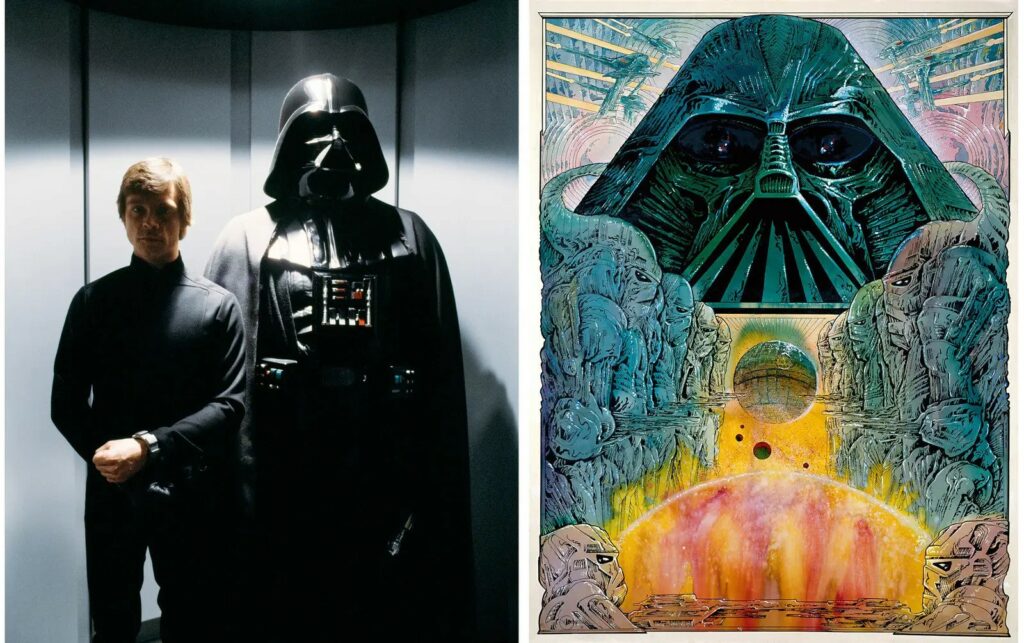
Matte paintings are paintings of an environment or distant area that can create the illusion that it is real, instead of having to get massive or large sets. For example, in the scene where Obi-Wan disables the tractor beam, they used see-through plexiglass to create the background around Obi-Wan and the generator with the live-action scene being left open to film.6
For Lucas, while his dream for his big blockbuster was finally coming together, it was very stressful. When filming, many of the props, such as RD-D2, wouldn’t function, and the actor who was playing C-3PO actually broke his left leg when putting on his costume. When post-production came around, things were hard because Lucas did not tell the production crew what the movie was about or like. Many of the editors had a hard time working with him and eventually left the project. They still had left some parts of what the other editor had left behind, but most of the film was cut out because it was just too much or unrelated to the plot of the film. It was the final push to release the film with marketing that took the form of comic books, toys, and even going to Comic-Con to promote it.
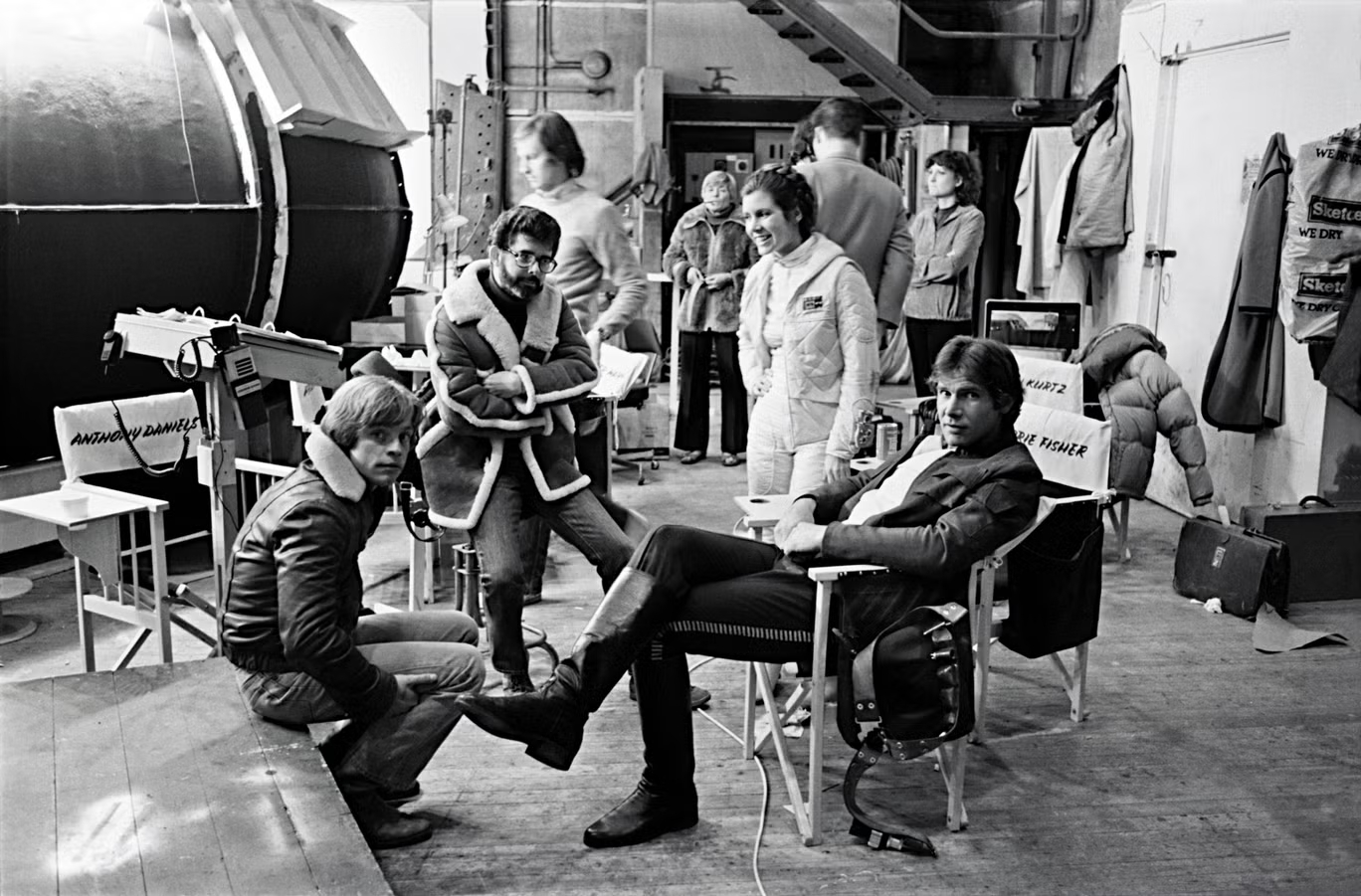
Star Wars was finally released on May 25, 1977, with a very surprised George Lucas, who forgot the date since he was busy with marketing and post-production. The film was a risky move, being from more of an independent director was still a gamble with the studio. But the film was successful and broke box office records. Many reviews were positive, praising its visuals, the narrative, the worldbuilding, and how it felt like an experience watching the movie. The film surpassed Jaws by earning over about 220 million. The film was released about four times with some new additional scenes and the 1980’s sequel The Empire Strikes Back. Star Wars was a cultural phenomenon and made George Lucas a great director. The rest was history, making Star Wars a blockbuster juggernaut, with its legacy still going on today, with movies, television shows, and comic books.
- Jones, Brian Jay. George Lucas: A Life (January 1, 2016) ↵
- Will Sayre, “Why Studios Initially Rejected George Lucas’ Star Wars Movie,” MovieWeb, February 23, 2023, https://movieweb.com/star-wars-george-lucas-rejected-why/. ↵
- Jan Helander, “The Development of Star Wars as Seen Through the Scripts by George Lucas – Starkiller,” Starwarz (website), accessed March 30, 2024,https://www.starwarz.com/starkiller/the-development-of-star-wars-as-seen-through-the-scripts-by-george-lucas/. ↵
- Jason Pham, “‘Star Wars’: Actors Who Auditioned or Turned Down Roles | Actors Almost in ‘Star Wars,’” Stylecaster (website), May 4, 2023, https://stylecaster.com/entertainment/tv-movies/1071886/star-wars-actors-auditioned-turned-down-roles/. ↵
- Rex Provost, “VIDEO: Star Wars — How Lucas & ILM Changed the Game,” StudioBinder, March 5, 2023, https://www.studiobinder.com/blog/star-wars-special-effects/. ↵
- Rex Provost, “VIDEO: Star Wars — How Lucas & ILM Changed the Game,” StudioBinder, March 5, 2023, https://www.studiobinder.com/blog/star-wars-special-effects/. ↵
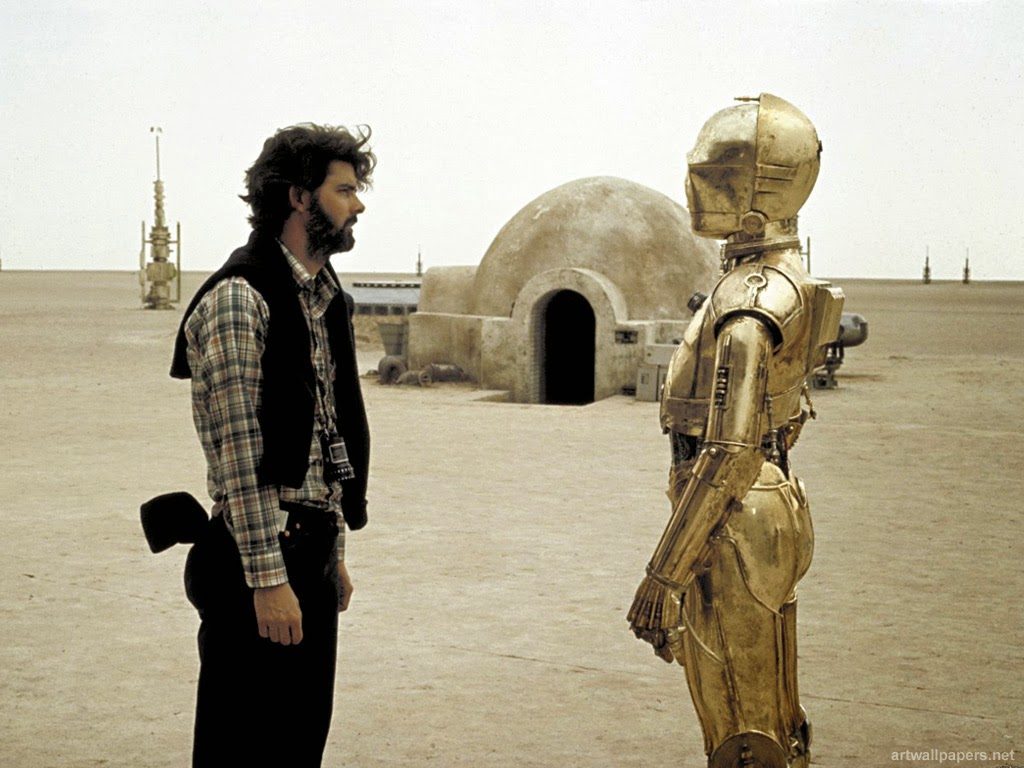


6 comments
Sebastian Hernandez-Soihit
Really informative article that explores the escence of Star Wars and how it fits in the larger picture of cinema history. I did not know how rough of a process it was to put the film together and releasing it or the little stories in between, also, very interesting primary sources!
Martin Martinez
I have never been a Star Wars fan per se, but I can recognize the franchise for the influence that it is. It brought John Williams to fame, and inspired many different filmmaking techniques. It brought us lightsabers and. It is a forever preserved mark of popular culture, even if George Lucas is no longer in charge of its properties or if its CGI has aged.
dandrews2
Hi Anzio,
I really enjoyed reading your article. As someone who is a fan of all aspects of the Star Wars universe, it’s nice to learn about the legendary man who made my favorite fictional universe: George Lucas. Reading about the ins and outs of the production of the original movies has given me an appreciation for what was brought to the big screen and how it was so well done in a time were movies like this were never made. Thank you for writing this well thought out article.
Walter Goodwin
As a big Star Wars fan I have heard about some of the stuff written in the article before, but I was glad to get more details and insights into Star Wars’s beginnings. One thing that was especially interesting was George Lucas’ earlier ventures, making connections and making American Graffiti as his starting film. It was also interesting to hear some of the ideas he had while developing a sci-fi movie, like trying to get the rights to Flash Gordon or making Han Solo green. I enjoyed this, it is a very good article.
Jonathan Flores
An interesting article to say the least. As a fan of the Star Wars franchise, it was interesting to learn a little more about the production of the original movie and the personal feelings of Lucas when doing so. To tell a young Lucas that his original idea for a film set in space would transcend into the franchise we all know and love is mind boggling. Unique subject and I was able to learn some things about a series I appreciate.
Diego
This was awesome I’ve seen the movies but never knew all the stuff behind production and George Lucas. Good read ????